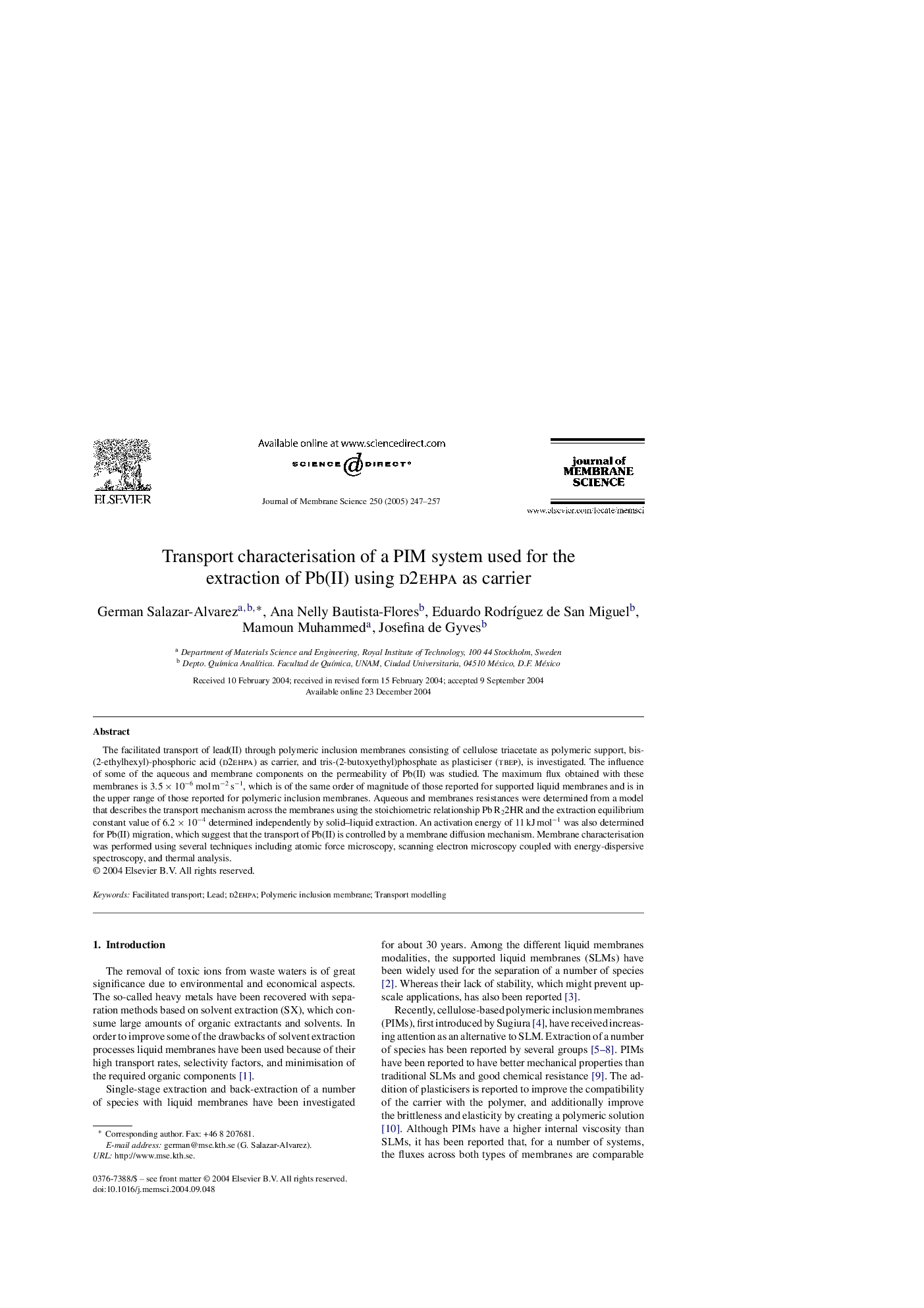| Article ID | Journal | Published Year | Pages | File Type |
|---|---|---|---|---|
| 9685023 | Journal of Membrane Science | 2005 | 11 Pages |
Abstract
The facilitated transport of lead(II) through polymeric inclusion membranes consisting of cellulose triacetate as polymeric support, bis-(2-ethylhexyl)-phosphoric acid (d2ehpa) as carrier, and tris-(2-butoxyethyl)phosphate as plasticiser (tbep), is investigated. The influence of some of the aqueous and membrane components on the permeability of Pb(II) was studied. The maximum flux obtained with these membranes is 3.5Ã10â6âmolâmâ2âsâ1, which is of the same order of magnitude of those reported for supported liquid membranes and is in the upper range of those reported for polymeric inclusion membranes. Aqueous and membranes resistances were determined from a model that describes the transport mechanism across the membranes using the stoichiometric relationship PbR22HR and the extraction equilibrium constant value of 6.2Ã10â4 determined independently by solid-liquid extraction. An activation energy of 11âkJâmolâ1 was also determined for Pb(II) migration, which suggest that the transport of Pb(II) is controlled by a membrane diffusion mechanism. Membrane characterisation was performed using several techniques including atomic force microscopy, scanning electron microscopy coupled with energy-dispersive spectroscopy, and thermal analysis.
Related Topics
Physical Sciences and Engineering
Chemical Engineering
Filtration and Separation
Authors
German Salazar-Alvarez, Ana Nelly Bautista-Flores, Eduardo RodrÃguez de San Miguel, Mamoun Muhammed, Josefina de Gyves,
